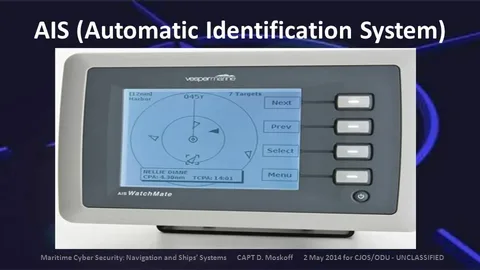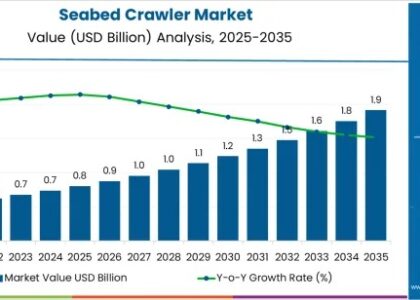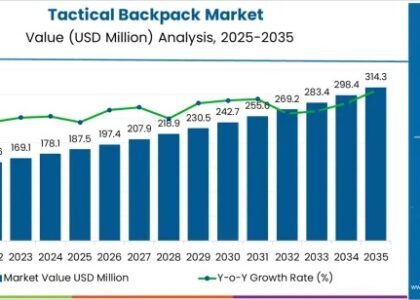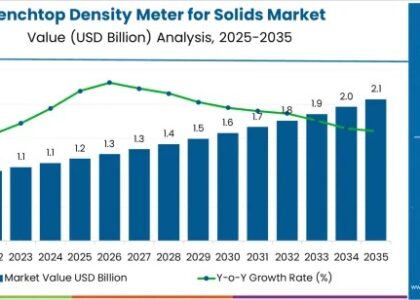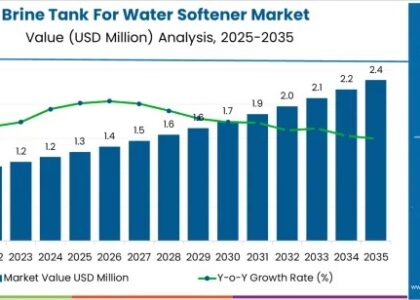The global automatic identification system market is slated to register USD 304.6 million in 2025. The industry is expected to witness 7.2% CAGR from 2025 to 2035 and witness USD 613.3 million by 2035.
In an era where global trade, maritime surveillance, and vessel traffic management are more crucial than ever, the Automatic Identification System (AIS) market has emerged as a vital enabler of secure and efficient maritime operations. Originally developed to prevent ship collisions, AIS has evolved into a foundational technology for real-time vessel tracking, maritime analytics, and coastal defense.
As the maritime industry embraces digitalization, automation, and tighter regulatory oversight, AIS is playing a central role in creating a transparent, data-driven maritime ecosystem—benefiting shipping companies, port authorities, defense organizations, and environmental agencies alike.
Get Ahead with Our Report: Request Your Sample Now!
https://www.futuremarketinsights.com/reports/sample/rep-gb-1096
From Safety Tool to Strategic Infrastructure
At its core, AIS is a communication system that automatically transmits vessel information—including position, speed, heading, identity, and voyage details—to nearby ships, coastal stations, and satellite networks. Initially mandated for large ships under international maritime regulations, AIS is now widely used across vessels of various sizes and functions.
Today, AIS is more than just a collision-avoidance system. It underpins a broad spectrum of maritime activities, including traffic monitoring, route optimization, fleet management, search and rescue operations, and fisheries protection.
Satellite and Terrestrial AIS: Expanding the Horizon
Modern AIS infrastructure is categorized into terrestrial AIS—covering coastal and inland waterways—and satellite AIS (S-AIS), which provides coverage far beyond the range of shore-based receivers. This dual capability ensures global maritime visibility, even in remote oceanic regions where traditional monitoring methods fall short.
Satellite AIS has become especially valuable for applications such as global shipping analytics, illicit activity detection, and emergency response coordination. As satellite constellations and data processing improve, AIS coverage and accuracy continue to increase, making it an indispensable asset for maritime situational awareness.
Integration with Maritime Digitalization and Smart Ports
The integration of AIS into smart port and digital maritime logistics platforms is revolutionizing how ports and shipping companies operate. Real-time AIS data supports:
-
Predictive berth planning and traffic congestion management
-
Automated customs and cargo processing
-
Environmental monitoring of emissions and maritime pollution
-
Digital twins of port operations
By combining AIS data with machine learning, weather analytics, and IoT sensors, operators can make better-informed decisions—reducing downtime, fuel consumption, and operational costs.
Defense and Security Applications
AIS is increasingly leveraged by naval forces, coast guards, and border security agencies for maritime domain awareness and threat detection. Anomalies in AIS transmissions—such as signal spoofing, unexpected routing, or blackouts—can indicate illegal fishing, smuggling, piracy, or unauthorized military activities.
AI-powered platforms now monitor AIS patterns to detect suspicious behavior, enhancing surveillance capabilities across both national waters and global shipping lanes. Integration with radar, sonar, and satellite imaging adds a multi-layered defense system for modern maritime security.
Compliance, Regulation, and Market Expansion
Global maritime organizations, including the International Maritime Organization (IMO), have made AIS a mandatory requirement for most commercial vessels. Regional authorities and coastal states are also implementing stricter AIS compliance rules to improve traffic control and environmental governance.
This regulatory momentum is driving increased AIS adoption among smaller vessels, including fishing boats, ferries, and private yachts. Governments are also deploying AIS stations in inland waterways and remote coastlines to expand coverage and improve regional traffic management.
Challenges in Data Quality and System Integrity
Despite its benefits, the AIS market faces key challenges. Data overload, signal interference, and cyber vulnerabilities are growing concerns as the number of AIS-equipped vessels continues to rise. In some cases, malicious actors manipulate AIS data to mask identities or fake vessel movements—creating gaps in maritime intelligence.
To address these issues, system developers are investing in robust encryption, data validation algorithms, and hybrid tracking solutions that combine AIS with GNSS, radar, and onboard sensors for cross-verification.
Exhaustive Market Report: A Complete Study
https://www.futuremarketinsights.com/reports/automatic-identification-system-market
Emerging Opportunities in Analytics and Commercial Intelligence
Beyond navigation, AIS data is becoming a valuable asset for business intelligence, trade analysis, and environmental studies. Shipping companies use AIS trends to optimize supply chain routes and monitor competitor behavior. Analysts use AIS datasets to forecast commodity movements, port traffic, and geopolitical risks.
In the insurance industry, AIS data supports accident forensics, risk assessments, and claims verification, offering a new layer of transparency and accountability in maritime operations.
A Future Anchored in Smart Navigation and Interoperability
As autonomous shipping gains momentum and vessels become more connected, AIS will evolve into an even more intelligent system—capable of dynamic risk assessment, autonomous decision-making, and seamless integration with smart navigation tools.
Next-generation AIS technologies will feature higher data rates, enhanced cybersecurity, and machine learning capabilities, supporting ultra-reliable maritime communications and predictive maritime management.
Charting the Course Ahead
The Automatic Identification System market is at the heart of the maritime industry’s transformation—facilitating safer seas, smarter logistics, and greater transparency across global waters. As shipping lanes grow busier and maritime operations become more complex, AIS will remain a strategic asset—powering digital navigation, regulatory compliance, and sustainable growth.
From ports and patrols to satellites and shipping routes, AIS continues to prove that in the digital age of maritime operations, knowledge is power—and visibility is everything.


